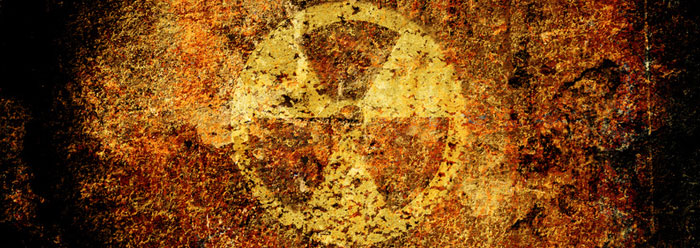
The RATE Project
In 1997, a group of young-earth creationists met in San Diego, California, to discuss the age of the earth. Their goal was to clarify the chronology of earth history and search for a fundamental correction to the usual assumptions of deep time. They were skeptical of the evolutionary timescale that dominates modern geology. These scientists reviewed the assumptions and procedures used in estimating the ages of rock strata and they recognized multiple weaknesses.
The group identified itself with the acronym RATE, which stands for Radioisotopes and the Age of the Earth. The RATE team included the following scientists and scholars:
| Steven A. Austin, Ph.D. | Soft rock geologist | |
| John R. Baumgardner, Ph.D. | Geophysicist | |
| Steven W. Boyd, Ph.D. | Hebrew scholar | |
| Eugene F. Chaffin, Ph.D. | Physicist | |
| Donald B. DeYoung, Ph.D. | Physicist | |
| D. Russell Humphreys, Ph.D. | Physicist | |
| Andrew A. Snelling, Ph.D. | Hard rock geologist | |
| Larry Vardiman, Ph.D. | Meteorologist, Chairman |
The RATE project was sponsored and promoted by three leading creation science organizations. These included the Institute for Creation Research and the Creation Research Society. Answers in Genesis gave startup support to the project. Technical research activity is expensive, and all RATE costs, which amounted to about $2 million, were covered by private donations. Sincere thanks are expressed to the many individuals and organizations that financially supported the RATE effort.
Several research initiatives were identified and conducted over an eight-year period. The main research initiatives and their principle investigators were:
| 1. Carbon-14 Dating | John R. Baumgardner | |
| 2. Helium Diffusion in Zircon Crystals | D. Russell Humphreys | |
| 3. Radiohalos in Granite | Andrew A. Snelling | |
| 4. Fission Tracks in Zircons | Andrew A. Snelling | |
| 5. Discordant Radioisotope Dates | Steven A. Austin | |
| 6. Radioisotope Dating Case Studies | Andrew A. Snelling | |
| 7. Theories of Accelerated Nuclear Decay | Eugene F. Chaffin | |
| 8. A Proper Reading of Genesis 1:1–2:3 | Steven W. Boyd |
The RATE project reported on the following five general conclusions:
| 1. A large amount of radioactive decay has occurred. | |
| 2. Nuclear decay processes were accelerated during episodes in earth history. | |
| 3. Conventional radioisotope dates are therefore incorrect by large factors. | |
| 4. Creation and the Genesis Flood are genuine historical events. | |
| 5. Scripture is scientifically reliable. |
A comprehensive treatment of the RATE research is available in three primary publications. The first technical book is titled Radioisotopes and the Age of the Earth: A Young-Earth Creationist Research Initiative.1 It fully explains the initial RATE research plans and also includes a comprehensive 90-page glossary of terms. The second technical book has the same main title with the subtitle Results of a Young-Earth Creationist Research Initiative.2 It gives full details of the final RATE research results with complete documentation. The third is a less technical book titled Thousands…Not Billions.3 It summarizes the RATE research and results with a minimum of technical terms. Several related references, available in many public and college libraries, are listed at the end of the book.
In addition to the primary publications in books, the RATE research was reported at the fall 2003 meeting of the American Geophysical Society in San Francisco, California (pdf files of the actual posters are available in this article4); in the proceedings of the Fifth International Conference on Creation;5 in two DVDs titled Thousands Not Billions and The Premier RATE Conference; and in numerous short articles in Acts & Facts.6-13
References
- Vardiman, L., A. A. Snelling and E. F. Chaffin, eds. 2000. Radioisotopes and the Age of the Earth: A Young-Earth Creationist Research Initiative. El Cajon, CA: Institute for Creation Research and St. Joseph, MO: Creation Research Society.
- Vardiman, L., A. A. Snelling and E. F. Chaffin, eds. 2005. Radioisotopes and the Age of the Earth: Results of a Young-Earth Research Initiative. El Cajon, CA: Institute for Creation Research and Chino Valley, AZ: Creation Research Society.
- DeYoung, D. B. 2005. Thousands Not Billions: Challenging an Icon of Evolution, Questioning the Age of the Earth. Green Forest, AR: Master Books.
- Vardiman, L. 2004. RATE Posters Well Received at AGU Conference. Presented at the American Geophysical Union Fall Conference, San Francisco CA, December 2003.
- Vardiman, L. et al. 2003. Radioisotopes and the Age of the Earth. In Proceedings of the Fifth International Conference on Creationism. Ivey, R., ed. Pittsburgh, PA: Creation Science Fellowship.
- Snelling, A. A. 2005. Polonium Radiohalos: The Model for Their Formation Tested and Verified. Acts & Facts. 34 (8).
- Snelling, A. A. 2004. Radioisotope Dating of Grand Canyon Rocks: Another Devastating Failure for Long-Age Geology. Acts & Facts. 33 (10).
- Humphreys, D. R. 2003. New RATE Data Support a Young World. Acts & Facts. 32 (12).
- Baumgardner, J. 2003. Carbon Dating Undercuts Evolution's Long Ages. Acts & Facts. 32 (10).
- Snelling, A. A. 2002. Radiohalos—Significant and Exciting Research Results. Acts & Facts. 31 (11).
- Humphreys, D. R. 2002. Nuclear Decay: Evidence for A Young World. Acts & Facts. 31 (10).
- Snelling, A. A. 1999. Potassium-Argon and Argon-Argon Dating of Crustal Rocks and the Problem of Excess Argon. Acts & Facts. 28 (3).
- Humphreys, D. R. 2005. Evidence for a Young World. Acts & Facts. 34 (6).



